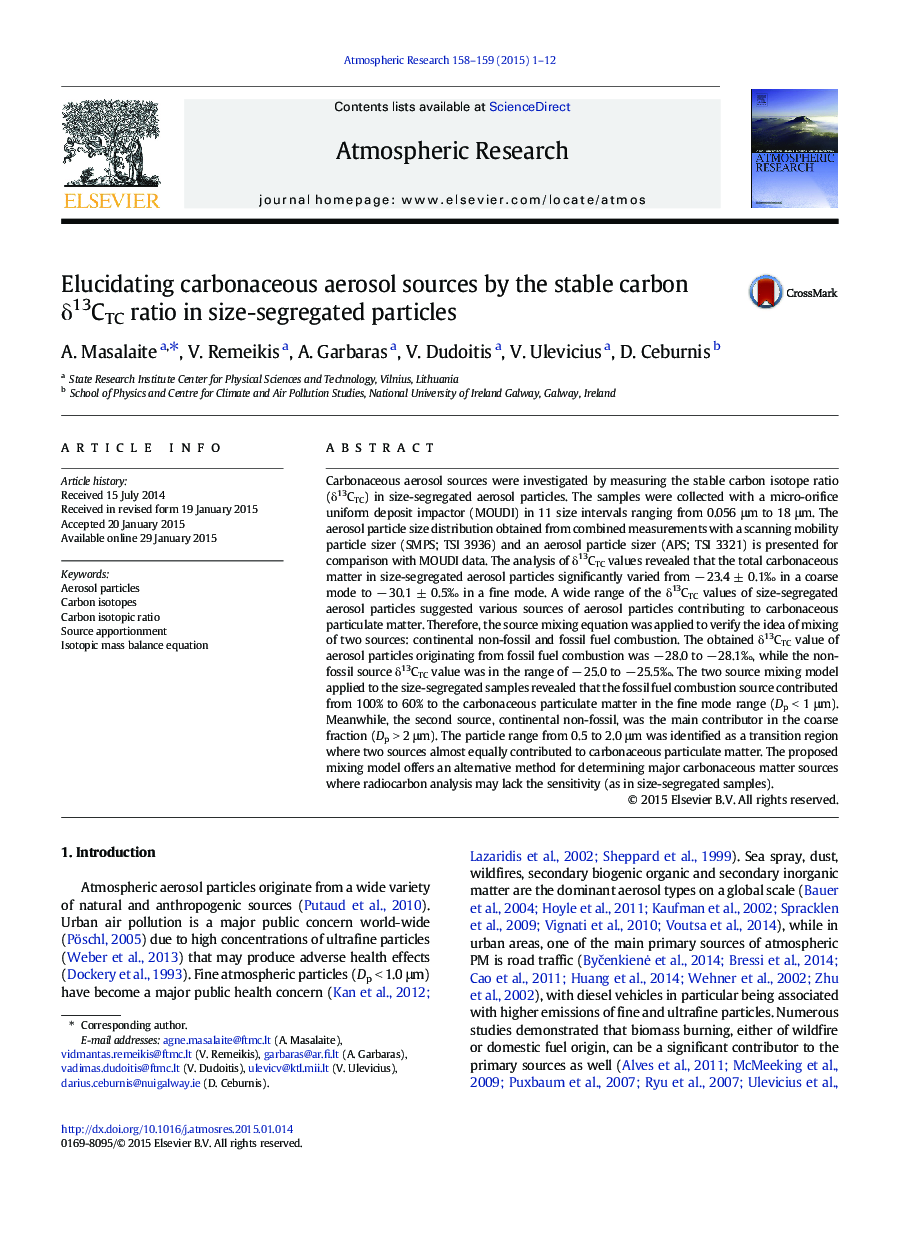| Article ID | Journal | Published Year | Pages | File Type |
|---|---|---|---|---|
| 6343277 | Atmospheric Research | 2015 | 12 Pages |
Abstract
Carbonaceous aerosol sources were investigated by measuring the stable carbon isotope ratio (δ13CTC) in size-segregated aerosol particles. The samples were collected with a micro-orifice uniform deposit impactor (MOUDI) in 11 size intervals ranging from 0.056 μm to 18 μm. The aerosol particle size distribution obtained from combined measurements with a scanning mobility particle sizer (SMPS; TSI 3936) and an aerosol particle sizer (APS; TSI 3321) is presented for comparison with MOUDI data. The analysis of δ13CTC values revealed that the total carbonaceous matter in size-segregated aerosol particles significantly varied from â 23.4 ± 0.1â° in a coarse mode to â 30.1 ± 0.5â° in a fine mode. A wide range of the δ13CTC values of size-segregated aerosol particles suggested various sources of aerosol particles contributing to carbonaceous particulate matter. Therefore, the source mixing equation was applied to verify the idea of mixing of two sources: continental non-fossil and fossil fuel combustion. The obtained δ13CTC value of aerosol particles originating from fossil fuel combustion was â 28.0 to â 28.1â°, while the non-fossil source δ13CTC value was in the range of â 25.0 to â 25.5â°. The two source mixing model applied to the size-segregated samples revealed that the fossil fuel combustion source contributed from 100% to 60% to the carbonaceous particulate matter in the fine mode range (Dp < 1 μm). Meanwhile, the second source, continental non-fossil, was the main contributor in the coarse fraction (Dp > 2 μm). The particle range from 0.5 to 2.0 μm was identified as a transition region where two sources almost equally contributed to carbonaceous particulate matter. The proposed mixing model offers an alternative method for determining major carbonaceous matter sources where radiocarbon analysis may lack the sensitivity (as in size-segregated samples).
Related Topics
Physical Sciences and Engineering
Earth and Planetary Sciences
Atmospheric Science
Authors
A. Masalaite, V. Remeikis, A. Garbaras, V. Dudoitis, V. Ulevicius, D. Ceburnis,
